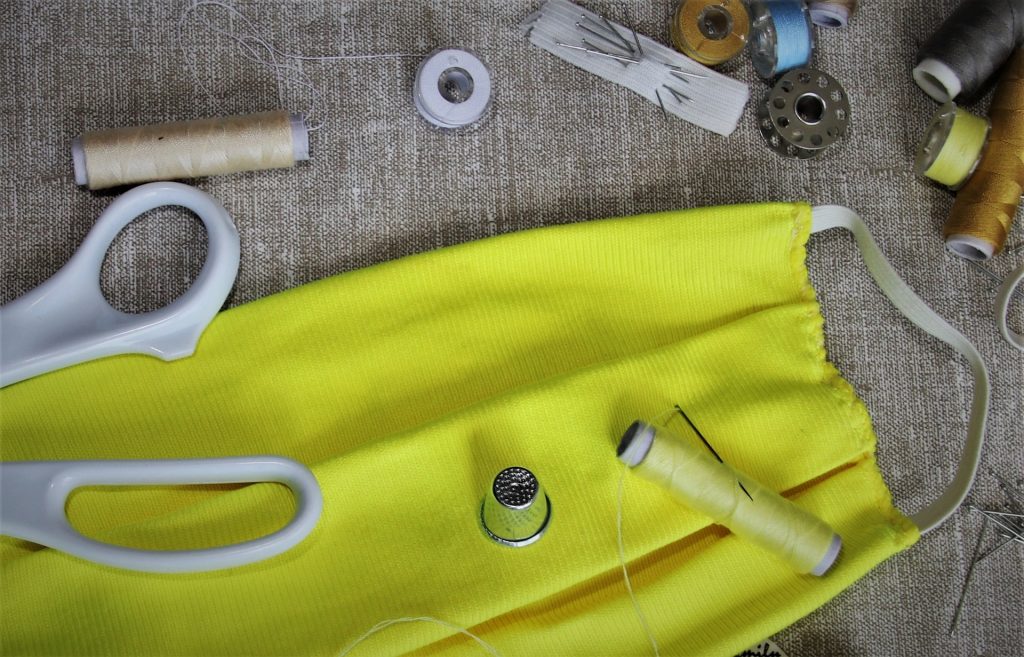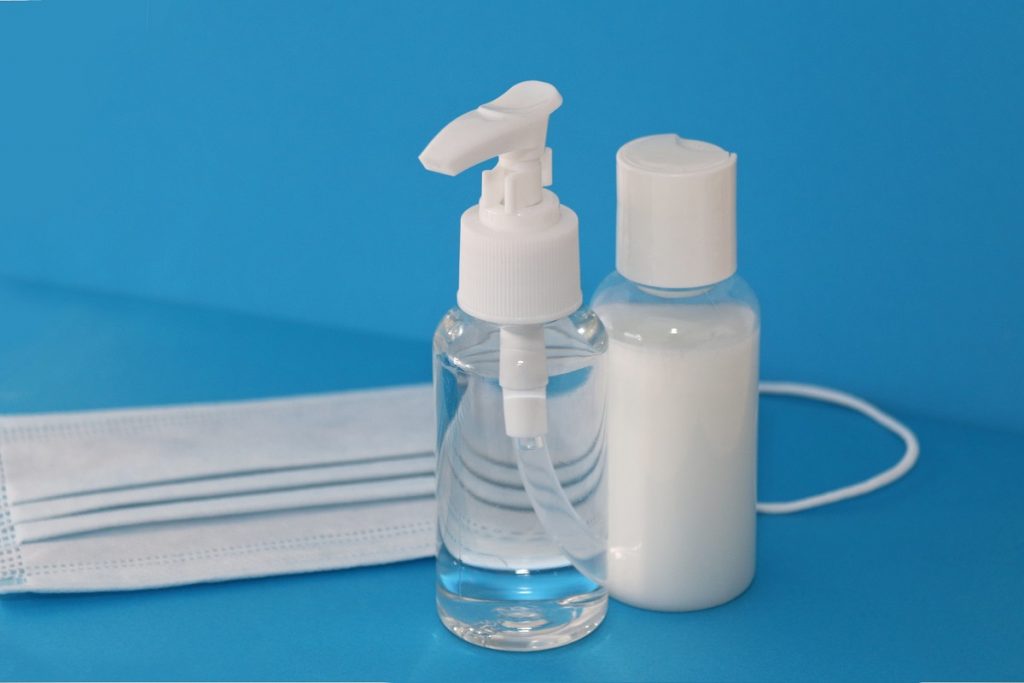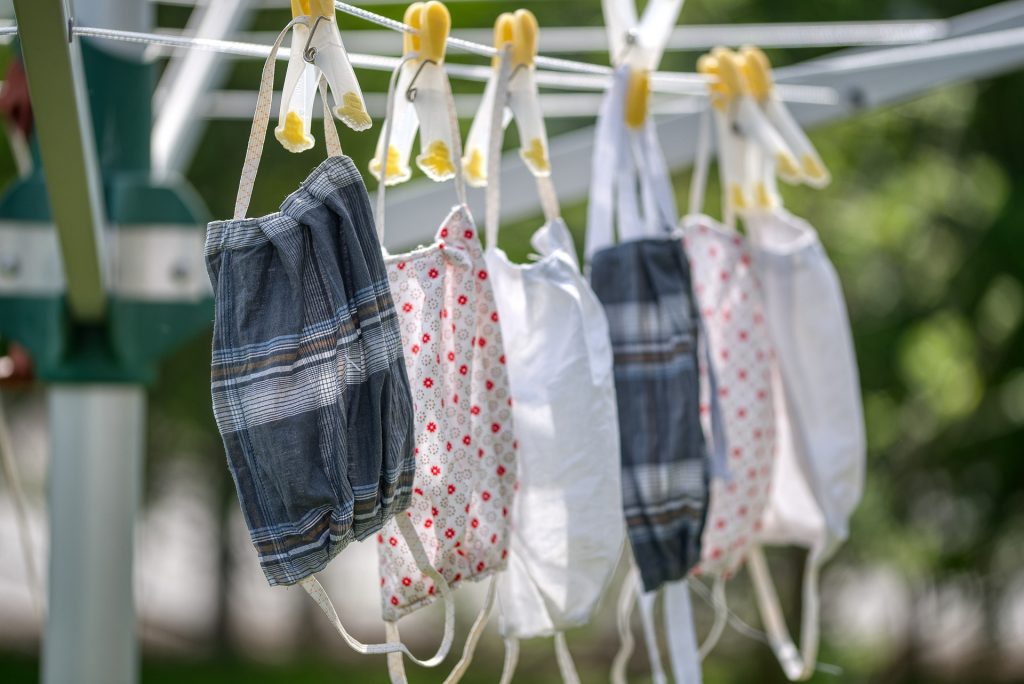All views and information presented in this blog post are for general guidance only and does not replace the advice from a medical professional. Please speak to your doctor if you have any concerns.
What a wild time we’re living in. COVID-19 is affecting all of us and it doesn’t matter where in the world we live. As part of COVID-19 life, we’re now wearing masks. Here in Melbourne, wearing masks while we’re out in public is compulsory. If we Melburnians don’t, we’re slapped with expensive fines.
Personally, wearing a mask is an important way that we can help stop the spread of COVID-19. However, there have been moments when I have struggled with it. The first day I wore a mask, I felt slightly claustrophobic. This feeling gradually subsided and I then noticed that my heavy breathing would fog up my sunglasses during my daily nature walks. This week, I’ve noticed pimples and spots pop up (no pun intended!).

COVID-19 or no COVID-19, I don’t have a facial routine. I wash my face daily and I wear sunscreen, but I don’t cleanse and I don’t moisturise. I don’t wear make-up and I certainly don’t wear concealer; the black rings under my eyes hang with pride! So, how can we keep our faces healthy while wearing our masks during our restricted travels? This is not about cosmetics. This is about taking care of part of our biggest organ. Did you know that our skin is our biggest organ?
What should we look out for?
According to The Occupational Dermatology Research and Education Centre, “prolonged wearing of masks and goggles can cause adverse skin reactions”. Moisture in the air or generated from our outward breath, and increased temperatures, can exacerbate these issues. So, you may be experiencing acne, itchy skin and even dry skin. If you experience auto-immune issues, eczema may also flare up.
Caring for your skin starts before we put our mask on…
We need to take care of our skin before we even put our mask on. So, how can you kick-start this care? The key message is to keep it simple and you can achieve this with a few quick hints from The Occupational Dermatology Research and Education Centre.
- Use a mild skin cleanser or soap substitute at the beginning and end of each day
- Toners dry the skin out so avoid these where possible
- Avoid fragranced products or products containing irritating ingredients; products with the least amount of ingredients work best
- Greasy creams should be avoided if you struggle with acne
- Don’t forget your sunscreen (which can also double up as your moisturiser)

Now, it’s time to wear your mask!
Once you’re ready to apply your mask, make sure you:
- Sanitise your hands first with hand sanitiser
- Take a few moments to fit your mask properly and avoid over-tightening it
If you’re applying moisturiser, The Occupational Dermatology Research and Education Centre recommends applying it at least 30 minutes before you wear your mask. This will lubricate the skin and will keep moisture to a minimum once you’re wearing a mask.
What I find really helpful is having a travel-sized hand sanitiser packed in my bag or kept in the car at all times. You may even like to think about packing an extra mask as a back-up if you’re allowed to leave the house for an extended period of time.
Also, just remember to resist the temptation of touching your mask while it’s in situ. You’ll then avoid contaminating your hands and yourself with any potential COVID-19 droplets or other nasties.

Take the pressure down a notch…
I think Aussie singer John Farnham was on to a good thing when he sang about taking the pressure down in 1986. He must’ve known we were heading for a pandemic? Hmm…Potential conspiracy theory aside, you should be careful not to choose a mask that’s too tight, or avoid tightening your mask too much. If you find that your mask leaves pressure marks, be assured that most marks are resolved once you remove your mask. If not:
- Apply gauze compresses to the face, soaked in a cool saline. It’s recommended to apply this at 20-minute intervals over a two to three hour period.
- Avoid using hot water
- Consider wearing a visor if pressure marks persist
When you’re ready to remove your mask:
- Remove your mask by holding the straps as the mask itself may be contaminated
- If your mask is disposable, dispose of it sensibly; do not litter your surroundings
- If your mask is a reusable one, wash it after every use
- Sanitise your hands and apply moisturiser to your face

Skin issues may not go away, or may become stubborn over time. You may want to consider giving yourself a break from wearing a mask, but as long as you’re still observing the COVID-19 laws in your area.
Overall, wearing a mask is crucial if we want to minimise the spread of COVID-19. It’s the best way for all of us, at an individual level, to do our part while we’re travelling through our communities and keeping us all safe. If your skin issues persist, speak to your doctor and seek medical advice.
You can learn more about developments in skin care and treatments during COVID-19 by visiting The Occupational Dermatology Research and Education Centre website.
Disclaimer: This post was written in accordance to specific points made public via The Occupational Dermatology Research and Education Centre in Melbourne, Australia. Fire & Tea does not have any affiliate links to or an existing relationship with this organisation.
If you’d like to help Fire & Tea inspire more people to travel the vegan road, you can do so via Patreon. Thank you for checking it out!




